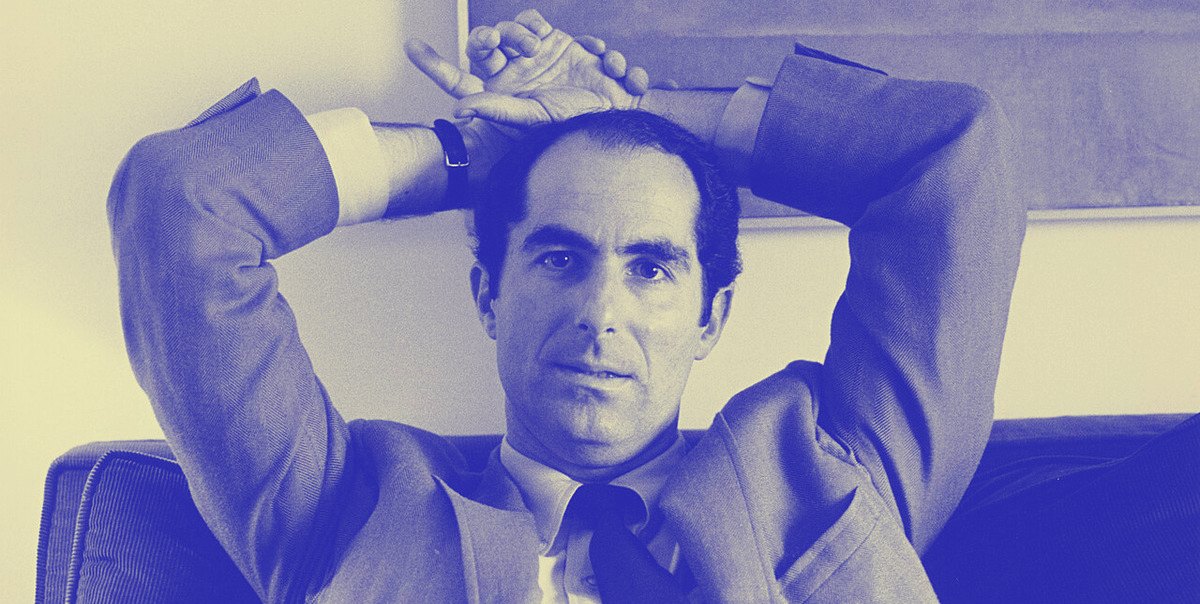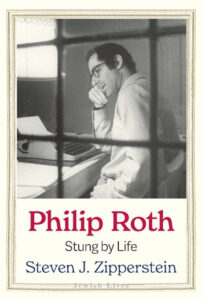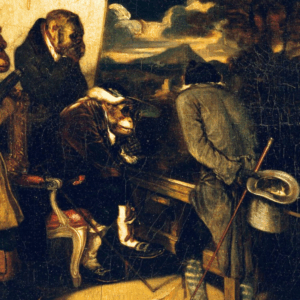
The Psychology of Portnoy: On the Making of Philip Roth’s Groundbreaking Novel
Steven J. Zipperstein Explores the Biographical Underpinnings of an Iconic Work of Jewish American Fiction
“The suburban Jewish past of the characters in the fiction of Philip Roth is also a Jewish past, only as meager as the span of a generation or two and infinitely more distasteful…”
*Article continues after advertisement
Already in 1967, the same year When She Was Good came out, the first samples of Portnoy’s Complaint were issued in wide-circulation magazines like Esquire and Sport, as well as the highbrow Partisan Review. Indeed, it was there, in that mainstay of the New York intelligentsia, that Roth signaled his departure from the magazine’s austere norms with the chapter entitled “Whacking Off.” Solotaroff’s new paperback journal New American Review ran two excerpted chapters of the novel, the first almost two years before the book’s appearance, the second numbering no fewer than twenty-eight thousand words.
By the time it was published in January 1969, Portnoy’s Complaint was tipped as a phenomenal bestseller. The Washington Post predicted that, for a long time to come, “we will judge our friends by what they say” about Portnoy. Quoting lines from the novel, the Houston Chronicle said—barely a week after its appearance—had already become “a national sport.” Few if any matched Albert Goldman’s excitement, writing in Life: “A savior and scapegoat of the ’60s,” declared Goldman, “Portnoy is destined at the Christological age of 33 to take upon himself all the sins of the sexually obsessed modern man and expiate them in a tragicomic crucifixion.”
Roth acknowledged the debt he owed others—including the by-now-obscure Wallace Markfield, the novelist and screenwriter Bruce Jay Friedman (author of the breakaway novel about Jewish neurosis Stern), and especially Isaac Rosenfeld, whose essays, short stories, and novels speculated, often hilariously, on the linkage between Jewish life and sexual inhibition. Particularly influential was Rosenfeld’s 1949 piece in Commentary, “Adam and Eve on Delancey Street,” with its insistence—half earnest and incredibly funny—that Judaism’s prohibition against the mixing of meat and milk left a permanent scar on Jewish male desire. The essay’s appearance in Commentary nearly brought down the then-liberal Jewish-sponsored magazine. Commentary was compelled to apologize for running it, with Roth seeing the episode as a precursor to the attacks on himself.
“A clumsy beginner” is how Roth later characterized his early career, before he mastered his craft. For some two years, Roth had been (as critic Scott Saul put it) “hacking away” at Portnoy’s Complaint. Here, much like When She Was Good, the book was the product of numerous drafts, some rather tepid, but what emerged from all this rewriting was a Portnoy that, while an “entrapped neurotic,” Saul writes, “broadened Roth, allowing him to serve as the butt of the extended joke that Portnoy relates. For all his limitations, Portnoy does have the double consciousness to see that he is both the storyteller spinning out an elaborate joke and the protagonist laid low by its various punchlines.”
Kleinschmidt’s sessions, with their assistance in permitting him to air these childhood traumas and the interplay of insight and folly in Freudianism, was the stew out of which emerged the novel that made Roth a household name.
In the preface to the thirtieth anniversary edition of Goodbye, Columbus, Roth—speaking at first in third person and describing himself prior to Portnoy’s Complaint as little more than an “embryo”—wrote that it was only once he made his way back to Newark, the origin of it all, that he finally found himself able to write an astonishing book:
His particular skills…inclined him to reimagine as a species of folk fiction—as unguarded short stories, spontaneously told, that somehow stretched over the bones of the folktale a skin of satiric social comedy—what not that long before had been the undifferentiated everydayness of Jewish life along the route of Newark’s Number 14 Clinton Place bus. In this way, without knowing it, he proceeded to make identical the acts of departure and return and to perpetuate those contradictory yearnings that can perplex the emotions of an ambitious embryo—the desire to repudiate and the desire to cling, a sense of allegiance and the need to rebel, the alluring dream of escaping into the challenging unknown and the counter-dream of holding fast to the familiar. Altogether unwittingly, he had activated the ambivalence that was to stimulate his imagination for years to come and establish the grounds for that necessary struggle from which his—no, my—fiction would spring.
It is the Freudian couch that Roth chose as the focal point for life’s drama. With the best remembered of all lines in the book, its punch line on the final page, where the psychoanalyst (hailing from Central Europe, the birthplace of psychoanalysis), who has remained silent throughout the entire monologue, issues the only words in the entire book by anyone except Portnoy himself: “So [said the doctor]. Now vee may perhaps to begin. Yes?”
Roth’s primer in psychoanalytic parlance was long in coming, with seven years spent in the presence of Hans J. Kleinschmidt, described later by another of his patients, the writer Adam Gopnik, as “a German Jew of a now vanishing type—not at all like the small, wisecracking, scared Mitteleuropean Jews that I had grown up among. He was tall, commanding, humorless. He liked large blooming shirts, dark suits, heavy handmade shoes, club ties.” Gopnik credits Kleinschmidt with considerable, if ponderous, insight laced with anecdotes, often inappropriately intimate, about his many famous literary and artistic patients. Regarding Roth, Kleinschmidt so stretched the limits of confidentiality that he published a summary of his analysis, only lightly disguised, in a psychoanalytic journal. Still, more astonishing is that Roth continued to see the analyst after discovering the article. And long after their sessions came to an end, in the 1990s, Roth made a point of having lunch with him once a year until Kleinschmidt was too ill to meet. When Ross Miller started work on Roth’s biography in 1996—this the first of several efforts at the writing of Roth’s life—Kleinschmidt was among the first Roth urged him to interview.
In Kleinschmidt’s lightly disguised description published in the journal American Imago, Roth is depicted as a southern playwright suffering from dreadful guilt over leaving his wife—this, of course, a strikingly different version than Roth’s own obsessively repetitive account. Indeed, Barbara Jakobson remembers her surprise at Roth’s reaction to news of Maggie’s death: She bought champagne to celebrate but recalls his dark disapproval of her excitement, which looked nothing less than “sanctimonious and rabbinical.” Kleinschmidt captured much the same: Guilt, he said, weighed terribly on him, exacerbated by a lifelong fear of abandonment traceable to childhood when his mother locked him out of the house, leaving him for hours in the freezing cold with him beseeching her to allow him to come in. Soon this would be translated into fear of castration, an enduring source of terror exacerbated by a calamitous episode that left him “ashamed, angry, betrayed, and speechless” when, at the age of eleven, while he was shopping with his mother for clothes, she spoke openly in a store about the size of his tiny penis.
Narcissism would emerge, according to Kleinschmidt, as his defense against this anxiety prompted by his mother (whom he had imagined in his childhood to be so ubiquitous that, in disguise, she was also his teacher flying home right after class to serve him milk and cookies). By the time he reached adulthood, he managed to slake his anger with the use of sex, cheating on his wife almost from the start of their marriage, although now desperately in need of her in the wake of his abandonment. His affairs helped, if only temporarily, to restore an ever-tenuous self-esteem. “His way of bypassing painful feelings and of avoiding any true confrontation with emotional reality was to libidinize both anger and anxiety,” as Kleinschmidt wrote. At best, it is only a “pleasurable anxiety” achieved with reliance on “polymorphous sexuality,” including “voyeurism, exhibitionism, fetishism, isolation, and masturbation.”
Kleinschmidt’s sessions, with their assistance in permitting him to air these childhood traumas and the interplay of insight and folly in Freudianism, was the stew out of which emerged the novel that made Roth a household name. This was a standing, Roth often insisted, he wished he had never achieved, but one he would come to miss and wish to retrieve once it disappeared, which, of course, it was bound to.
Which Freud Roth absorbed remains unclear—the Freud as understood by Lionel Trilling, then the country’s most influential critic, or that of Norman O. Brown, the Nietzsche-inflected author of the widely discussed Life Against Death published in 1959, with its insistence on the primacy of body over mind? Kleinschmidt was undeniably far closer to Trilling: “He believed,” writes Gopnik, “that the only thing to do with the knowledge of murderous rage within your breast was not to mythologize it but to put a necktie on it and heavy shoes and a dark-blue woollen suit. Only a man who knew that, given the choice, he would rape his mother and kill his father could order his spaghetti vongole in anything like peace.”
Yet Patrick Hayes, among Roth’s finest literary interpreters, reads Portnoy’s Complaint as deeply influenced by Brown’s Nietzschean Freud, with the novel’s call for the liberation of instinctual life as exemplified by Portnoy’s much-disparaged lover, nicknamed The Monkey, a brilliantly conceived exemplar of physicality. Crucial, as Hayes sees it, is her ability to absorb the beauty of Yeats’s poetry—to “Feel feeling!” as Roth puts it—the poet’s words capable of making her “pussy all wet.” “Sweetheart! You understood the poem!” exclaims Portnoy, “And with your cunt, no less.”
No matter how Roth read Freud, it remains clear he wrote his novel with the master’s Collected Papers close at hand as an indispensable source, if also perhaps a foil. It served him here no less than did James’s Portrait of a Lady in the writing of Letting Go. David Rieff—long a close friend of Roth’s and his editor at Farrar, Straus and Giroux—recalls Roth being a quick learner, assiduous if also keenly selective in his reading; in all the years they knew each other, Rieff never remembers Roth reading or so much as mentioning Nietzsche.
Still, Freud, as well as Norman O. Brown and Lionel Trilling, were all in there—others, too—stretching the narrative, deepening it without the need to reference them. Misconstrued by many as something akin to an extended Henny Youngman routine, Portnoy’s Complaint more closely resembled, according to Albert Goldman, the comedic world of adolescent Roth and his buddies, with its audacity, ferocity, originality, and sheer fecundity. That its themes were so repetitive made their creativity all the more impressive, as the novel vented and ridiculed—as Goldman saw it—“the feared, admired, and despised goyim and…the Jewish family and society that surrounded them. The Jewishness of [Roth’s] humor lay precisely in its obsessional concern with the fact of Jewishness screaming out the curses of a particularly hysterical and obscene self-mockery.”
Roth rejected all comparisons with comedians like Youngman or Lenny Bruce, seeing these as demeaning while counterposing instead the great Jewish “comedian” Franz Kafka. He preferred to compare the novel’s achievement to that of Sherwood Anderson, William Styron, or Saul Bellow, while also pleased to acknowledge the book’s therapeutic impact in providing readers with permission to say things aloud that they never could before. Zadie Smith, later a close friend of Roth’s, summed this up well: “Roth’s gift with Portnoy was large precisely because it had no aspirational element and no precise directions. Like any good gift, the less strings we find attached to it the better. The offer was not ‘You, too, can be like Portnoy.’ The offer was, ‘Portnoy exists! Be as you please.’…He’s written things down that seemed unsayable, impossible, and in taking this freedom for himself, intentionally or not, passed the freedom down.”
At the epicenter of Portnoy is the mother, and—despite Roth’s demurrals—the portrait draws on his mother Bess: “Mine remember, patrols the six rooms of our apartment the way a guerilla army moves across its own countryside—there’s not a single closet or drawer of mine whose contents she hasn’t a photographic sense of.” True, Sophie Portnoy possesses none of Bess’s self-restraint, her ability to superimpose limits with the use of little more than a passing gesture, no more than a word or two. But it is the mother, not sex, that is the novel’s primary focus, with its cry of protest, its desperate call to be left alone.
The book, writes Hayden Carruth in the Philadelphia Inquirer, never uses humor “simply for its own sake: The more one listens to his memories, however, the more one feels that the clown’s mask reveals a deeper neurosis.”
And the stultifying rules, as often as not illogical—like the strict prohibition against the eating of pork, which pertains everywhere except, apparently, Chinese restaurants—are omnipresent; they are an insurmountable barrier against the prospect of simple mindless pleasures, which, as Portnoy sees it, is a universe enjoyed never by Jews but exclusively by gentiles. He longs for a world where there is no obstacle against simply being bad—no barrier to, say, hunting deer, or eating lobster, drinking whiskey, or flunking tests—without shame. To be bad and enjoy it, this is Alexander Portnoy’s greatest wish:
Look, am I exaggerating to think it’s practically miraculous that I’m ambulatory? The hysteria and superstition! The watch-its and the be-carefuls! You mustn’t do this, you can’t do that—hold it! don’t! you’re breaking an important law! What law? Whose law? They might as well have had plates in their lips and rings through their noses and painted themselves blue for all the human sense they made! Oh, and the milchiks, and flaishiks besides, all those meshuggeneh rules and regulations on top of their own private craziness! It’s a family joke that when I was a tiny child I turned from the window out of which I was watching a snowstorm, and hopefully asked, ‘Momma, do we believe in winter?’ Do you get what I’m saying. I was raised by Hottentots and Zulus! I couldn’t even contemplate drinking a glass of milk with my salami sandwich without giving serious offense to God Almighty.
Far worse, to be sure, are the preposterous underpinnings of Christianity, where they take a Jew and turn him into a God after he is dead and then accuse Jews of having done away with him. Ribald, wildly anarchic, it is also a poignant book full of a longing for redemption—this synonymous, as Portnoy comes to see it, with mediocrity: the capacity not to strive for excellence at home, school, work, bed, or marriage. For all its limitations, mediocrity is immeasurably superior to ceaseless ambition, the need always for superlative achievement. Portnoy is keenly aware of the chasm, separating the (quite modest) sins committed by his parents and the unquenchable rage they’ve engendered. But despite all the energy and intelligence he devotes to understanding this dilemma, he fails altogether. Now in his thirties, a figure of some stature in the New York City government, he finds himself simply tongue-tied, incoherent when confronted with the simple question asked by his mother: What are the horrible things that she has done to him? “I believe she considers the question unanswerable. And worst of all, so do I. What have they done for me all their lives, but sacrifice? Yet that this is precisely the horrible thing is beyond my understanding—and still, Doctor! To this day!”
He dreams of returning home, yearnings especially acute toward the novel’s end, when he fears The Monkey has killed herself because he brought a prostitute into their bed for a threesome. He wishes desperately to re-create the bland normalcy of childhood or, at least, an unblemished adulthood like his father’s, from which, of course, he fled years ago:
I love those men! I want to grow up to be one of those men! To be going home to Sunday dinner at one o’clock, sweat socks pungent from twenty-one innings of softball, underwear athletically gamy. Yes, home I head for resuscitation…and to whom? To my wife and my children, to a family of my own, and right there in the Weequahic section! A future, see! A simple and satisfying future! Exhausting, exhilarating softball in which to spend my body’s force—that in the morning—then in the afternoon, the brimming, hearty stew of family life.
This “brimming, hearty stew of family life,” its allure, the inconceivability of return of the sixties. Portnoy enjoys little of his promiscuity, and it is inconceivable that his yearning will ever be satisfied. Built squarely into Roth’s portrait, as he explained it at the time to Alan Lelchuk, was an already attentive reading of Kafka: “an angry little man, a guy who stands in front of you at the bank, he’s giving the teller a hard time and he won’t leave until he gets his way, he never tires, he’s indefatigable…right down to the door of the Castle which he never enters.”
*
Few at the time watched Roth with greater acuity than Albert Goldman. On the staff of Life, his portrait in the magazine on the cusp of the book’s appearance was among the most enthusiastic and keenly perceptive, scorning “the scandal fuming up from the book’s pungent language, a veritable attar of American obscenity; and from its preoccupations, foremost among which is the terrible sin of onanism.” Goldman identified as Roth’s greatest achievement his capacity to produce “the final perfection of…the comic art of this Jewish decade,” a blending of the genius of the Marx Brothers, Catch-22, Lenny Bruce, Freud, and much more into a profound study of the Jewish family transcending ethnic boundaries.
It is the mother, not sex, that is the novel’s primary focus, with its cry of protest, its desperate call to be left alone.
Goldman was a cultivated man and a professor (trained at Columbia by Trilling), in love with classical music, and widely read. A learned scholar of the art of plagiarism (the topic of his Columbia dissertation), he indulged in it himself, forfeiting the prospect of a permanent university appointment. A friend of his, James Wolcott, told me that Goldman introduced Roth to New York nightlife, leaving its mark on the writing of Portnoy’s Complaint. Still, when introduced by Goldman to “real swingers, you could see his nostrils quiver.”
A rock music critic of great talent, his portrait of the origins of rock and roll in Solotaroff’s New American Review is masterful. Goldman was the author of a widely praised study of Lenny Bruce. His later, no less extensively researched books on Elvis and John Lennon were nonetheless hotly contested, with music critic Greil Marcus describing the Elvis biography as an exercise in “cultural genocide.”
What Roth would not know (it seems unlikely that he was ever aware) was that Goldman kept what he described as a “Rothlog”: dictating it into tapes, then arranging for its transcription. He started it when he wrote his essay for Life in February 1969 and added to it, on and off, until shortly before his death in 1994. No more detailed portrait of Roth exists for the period from the late 1960s until the mid-seventies:
Walking the streets of the area with Phil reminded me of the old days in Yorkville. He sees the eastern European stores through the glamorizing medium of obsessed fantasy. Its [sic] as if he were in Hungary, Czechoslovakia or Poland. Pointing to a delivery truck, he says: “There’s the sort of name I like for a novel: Lemish!” Then we go to Paprik Weiss and buy a couple of pastry brushes that are made with white chicken feathers. Clit tickler they are in Philip’s mind. He even buys one for me. What a big deal to buy anything for another person. Cheap to the bone.
Goldman’s friendship with Roth tapered off eventually, and never was he among Roth’s small number of intimate friends. Perhaps the distance was a result of Goldman’s eventual drug use or the appearance of The Professor of Desire published in 1977, whose sardonic portrait of David Kepesh drew heavily on Goldman. But for a period of some five or six years, Goldman was close enough to scrutinize Roth relentlessly, and the Rothlog is a remarkable study of admiration and keen perceptiveness:
“He was smart, funny and clever, outrageous and edgy,” recalled Barbara Sproul about Goldman; Sproul, whose romance with Roth started around the same time in the late sixties, told me: “All these qualities cloaked a serious morality. He challenged Philip who was an even ‘gooder’ boy.” In his log, Goldman hints at its excision of their wildest moments together. In an outline of a book proposal written in 1992 drawing on his friendship with Roth, Goldman notes that he expected to include “sexual and other adventures not in the log.”
Preparing for his exuberant celebration of Portnoy’s Complaint in his Life article, Goldman’s notes describe his intent to capture “Philip as a personality.” He adds that Roth is “always hidden behind the literary mask.” To achieve this for him is crucial: “Consider the energetic level Philip obtains. Hysterical. Lap up humiliation; like he laps that girl’s pussy.”
Goldman’s sense of Roth is one where his literary genius is interlaced with the same obsessive preoccupations that he cannot permit himself to act on, but consigns to his prose with rare determination, self-denial, and extraordinary intelligence. This, arguably, is the most significant of his many gifts. Goldman describes the glee with which Roth buys a couple of pretzels from a New York street vendor, crying out that he loves them mostly because they’re so dangerous, so full of germs. All this Roth builds into his remarkable prose constructed with consummate discipline, a keen awareness of his literary strengths as well as his limitations. Goldman writes in a log entry in 1970:
The strongest sense you get in talking to Philip Roth about these projects is the creative mind is constantly coming up with ideas. The real artistry is not in the writing, not in the conceiving, but almost, you might say, in the editing. Philip is a very good editor of Philip. He goes through all the different ideas his mind throws up and he carefully selects the right one, ejects the wrong ones. He is very canny, very smart, very shrewd, and he knows what’s good and bad. It’s like there are two Philips: there’s the creative Philip that throws all this shit like crazy, manic style; and there’s the very cold, calculating Philip who sits down and says that’s bullshit, that’s cheap, that’s trash. The two operations of the creative mind—the mining and the refining.
Assessing Roth here, weighing his many strengths and not inconsiderable weaknesses—his fears, paralyzing inhibitions, and fierce competitiveness—Goldman declares in 1975 that finally he is convinced that he has earned Roth’s admiration with his much-acclaimed Lenny Bruce biography. And now—in large measure for the first time since his glowing Life portrait— Goldman comes the closest to summing up as fully as he would Roth’s unnerving complexity:
You don’t know anything about Philip until you grasp the idea that he has this sort of gleaming, mad, glazed-eye fascination with the moral incongruity of contemporary civilization. It’s sort of gleeful—where someone else would say, oh that’s disgusting or sick or appalling or depressing—he has a gleeful exhalation in completing out-of-joint we are morally [sic]. It’s just now that he’s beginning to get that into his writing. In the time that I’ve known Philip well in the past 5 or 6 years, that has been the most striking feature of his mental makeup—exulting in someone else’s fuck-up. A sort of male exhaltation [sic] he gets when he sees these incredible moral incongruities these abysmal blindnesses.
__________________________________

From Philip Roth: Stung by Life by Steven J. Zipperstein. Copyright © 2025. Available from Yale University Press.
Steven J. Zipperstein
Steven J. Zipperstein is the Daniel E. Koshland Professor in Jewish Culture and History at Stanford University. He is the author or editor of ten books, including Rosenfeld’s Lives: Fame, Oblivion, and the Furies of Writing and Pogrom: Kishinev and the Tilt of History. He lives in Berkeley, CA.












